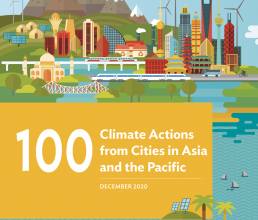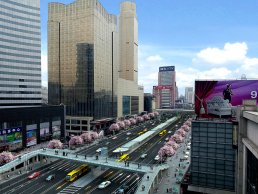First appeared in

Asian Development Bank
100 Climate Actions from Cities in Asia and the Pacific
A $422 million urban transport development project in Shandong’s capital plans to reduce emissions and congestion in the city through the construction of a modern trolleybus network and application of travel demand management measures.
A $422 million urban transport development project in Shandong’s capital plans to reduce emissions and congestion in the city through the construction of a modern trolleybus network and application of travel demand management measures.
Jinan is a major administrative centre in eastern China and is home to 1.7 million private vehicles. The number of automobiles is growing by 20% each year, and transport contributes 15% of harmful atmospheric particulate matter in the city, which is especially problematic given Jinan’s status as one of the ten most polluted cities in the world.
250K
TONS OF CO₂ EQUIVALENT REDUCED EVERY YEAR
To ensure that public transport is a more attractive option for keeping up with a steady increase in travel demand, the Jinan Public Transport Company intends to install 111 kilometers of prioritized bus rapid transit (BRT) lanes to be served by 735 electric trolleybuses.
Electric-powered trolleybuses are more energy efficient than conventional diesel buses and rail-based transport, and when integrated with BRT routes provide a high-capacity and low-carbon travel option.
Public transport ridership is expected to increase by one-third, with emissions reductions of around 250,000 tons of CO₂ equivalent each year.
ADB provided financing of $150 million for the project.

The new trolleybus network will improve the accessibility and efficiency of Jinan’s public transportation system (photo by Institute for Transportation and Development Policy).
The Challenge
Private vehicle use is high, and the development of metro lines is not possible due to Jinan’s unique underground streams and protected springs.
Co-Benefits
Social The new BRT network will benefit 1.7 million people in surrounding districts, with the overall quality of public transport also being increased.
Health By reducing particulate matter from traffic congestion, lung irritation and chronic lung diseases will be reduced and public health improved.
Economic The project will create 1,500 job opportunities, and will result in lower vehicle operating costs and time savings.

